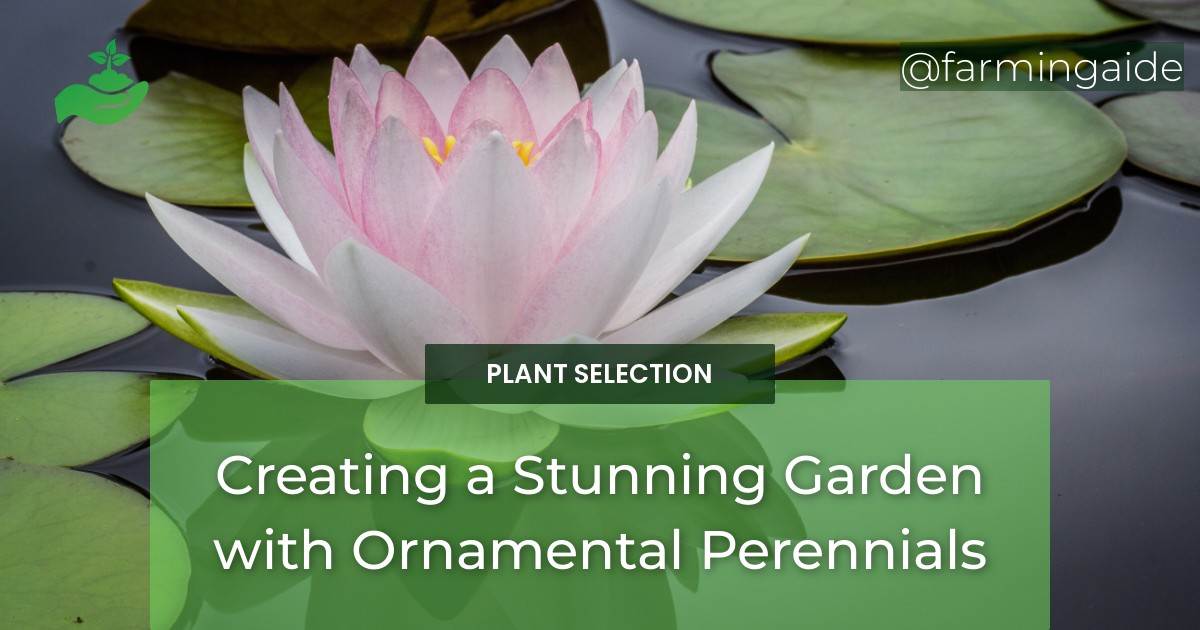Creating a stunning garden with ornamental perennials is a great way to add color, texture, and interest to your outdoor space. Unlike annuals, which need to be replanted each year, perennials come back year after year, making them a low-maintenance and cost-effective choice for any garden. In this comprehensive guide, we’ll explore different design ideas for incorporating ornamental perennials, provide tips for planting and maintaining them, and showcase popular varieties to consider.
Design Ideas for Incorporating Ornamental PerennialsChoosing the Right PerennialsGrouping PlantsCreating Focal PointsAdding Color and TexturePlanting Advice for Ornamental PerennialsPreparing the SoilPlanting TechniquesWatering and MaintenanceConclusion
Design Ideas for Incorporating Ornamental Perennials
Choosing the Right Perennials
When selecting perennials for your garden, it’s important to consider several factors, including climate and growing conditions, bloom time and duration, and height and spread. Some popular ornamental perennials to consider include:
Daylily
Coneflower
Black-eyed Susan
Hosta
Sedum
Grouping Plants
Grouping plants together in a garden can create a cohesive and visually appealing design. It’s important to consider the different varieties of plants you want to include and their growing requirements. Some examples of plant groupings for different garden styles include:
Modern garden: ornamental grasses, alliums, and echinacea
Cottage garden: roses, delphiniums, and foxgloves
Wildflower garden: native grasses, coneflowers, and black-eyed Susans
Creating Focal Points
Focal points are an important part of garden design, as they draw the eye and create interest. Ornamental perennials that make great focal points include:
Peonies
Iris
Delphiniums
Hollyhocks
Adding Color and Texture
Using perennials to add color and texture to a garden is a great way to create interest and depth. When selecting perennials, it’s important to consider the color scheme you want to create and the texture of the foliage. Some tips for adding color and texture to your garden include:
Choose plants with different foliage colors and textures
Use color theory to create a cohesive color scheme
Incorporate foliage plants for added texture
Planting Advice for Ornamental Perennials
Preparing the Soil
Preparing the soil before planting is an important step in ensuring optimal plant growth. To prepare the soil:
Test the soil to determine its pH level and nutrient content
Add amendments such as compost or manure to improve soil quality
Planting Techniques
The best time to plant perennials is in the spring or fall, when the weather is cooler and the plants have a chance to establish themselves before the heat of summer or the cold of winter. Some tips for planting perennials include:
Plant in a hole slightly larger than the root ball
Water thoroughly after planting
Space plants according to their mature size
Watering and Maintenance
Proper watering and maintenance are key to keeping your ornamental perennials healthy and looking their best. Some tips for watering and maintenance include:
Water deeply and infrequently, rather than shallowly and frequently
Deadhead spent blooms to encourage new growth
Divide perennials every few years to prevent overcrowding
Monitor plants for signs of pests or diseases and take action promptly
ALSO READ
Conclusion
Ornamental perennials are a great addition to any garden, providing color, texture, and interest year after year. With the right design ideas and planting techniques, you can create a stunning garden that’s sure to impress. Whether you’re a seasoned gardener or just starting out, incorporating ornamental perennials is a great way to elevate your outdoor space.
RELATED ARTICLES:


